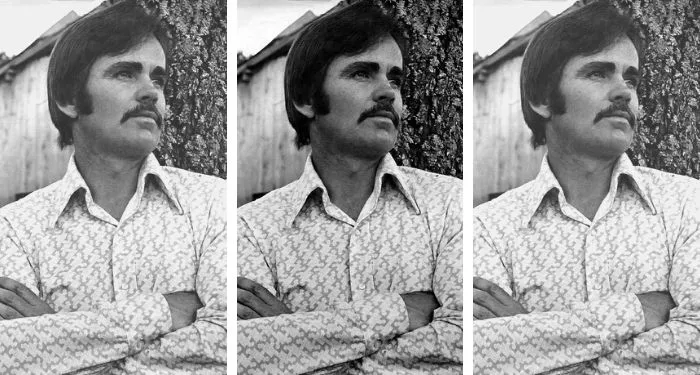The man who fixed my roof stopped by the other day to see if he could charm me into giving him more work. He’s a jovial fellow in his sixties, with a bustling family business, who, judging by his name and fair complexion, is probably of Scottish origin. I was trying to figure out whether what he was telling me about my cornices was true when he suddenly started ranting about migrants. He was convinced that they were being lured by tales on social media of a carefree life in America. “They get free gift cards!” he exclaimed. “They get free phones and free health care—free everything!” I could have pointed out that US Immigration and Customs Enforcement (ICE) has given some recent arrivals limited-use phones in order to monitor asylum seekers without having to bear the costs of jailing them. I knew that the rumor about the gift cards had been spread by a Republican Senate candidate in Arizona, but I had little hope of changing the roofer’s mind. Conservative media spouts an endless stream of anti-immigrant vitriol that, sadly, many find appealing. Even liberal yuppies in my Brooklyn neighborhood lined up at a community board meeting in May to complain that there were just too many migrants at local shelters.
It’s hardly news that Republicans use immigration to make Democrats look soft, and it can’t be ignored that the number of migrants who crossed the US–Mexico border reached record highs in 2023. What the inflammatory claims about a “migrant crisis” overlook is that, because of a decline in the American population growth rate, the US actually needs immigrants to fill essential jobs for at least the next thirty years. That reality doesn’t stop us from whipping up anti-immigrant sentiment, and that rhetoric is nothing new. Casting recent arrivals as invaders, degenerates, threats to social and economic stability, or unwanted charges on local budgets was commonplace in the nineteenth and early twentieth centuries, when millions of Irish, Chinese, Italian, and Eastern European immigrants were coming to America. At that time, laws were implemented to restrict their admission and preserve the political power of a white Protestant elite, and many a county jail made good money imprisoning noncitizens. What has changed in the past forty years is the scale of the effort to criminalize and detain migrants.
The US now invests more money and effort in immigration enforcement than it ever has in its history. Last year the Biden administration requested $25 billion for US Customs and Border Protection (CBP) and ICE. In 2022, 28.4 percent of criminal cases in federal courts were immigration related, a figure that excludes the sizable number of immigration cases handled by magistrate courts. President Biden recently issued an executive order that closes the southern border if the weekly average for daily crossings reaches 2,500 people per day, which is less than a third of the average number of daily crossings last fall—and the border would only reopen after the average number of entries drops below 1,500 daily for an entire month. This effectively blocks asylum seekers who, in accordance with international law, should be entitled to enter and plead their case.
While stringent anti-immigration measures may be attractive to lawmakers, it is not entirely clear that detaining migrants deters migration. Two new books by the scholars César Cuauhtémoc García Hernández and Ana Raquel Minian criticize our current policies and examine their history, questioning their efficacy on moral and procedural grounds. García Hernández looks at the laws that have shaped migrant detention. Minian elaborates four case studies to show how racism and political currents have led to long detentions of those who have not done anything wrong.
García Hernández, a law professor at Ohio State University, grew up on the American side of the US–Mexico border. Welcome the Wretched combines his expertise in immigration law with extensive knowledge of the situations of relatives, friends, and professional associates who cross the border in search of work and family. He maintains that migration itself should not be considered a crime and argues that the imposition of laws restricting immigration does not stop people from crossing—but it does encourage smuggling enterprises that exploit migrants, and it produces profits for the local jails and private industries involved in their detention. He believes that immigrants’ extenuating personal circumstances such as family ties, long periods of residence in the US, and US military service should be reasons for leniency when officials make decisions about deportation. And he marshals facts about the racialist views that led to the criminalization of border crossing a century ago and currently result in the targeting of Mexican, Central American, and Caribbean people on the one hand and the lax treatment of Canadians and Europeans on the other.
García Hernández is adept at revealing inconsistencies in the application of immigration law, reminding us that American attitudes toward immigration have been nothing if not inconsistent. While we may be quick to reject migrants as criminals now, convict labor was used extensively during the colonial period (a practice that ceased in 1788, when the Continental Congress of the newly independent United States called on states to ban it). After the Civil War, when formerly enslaved Black people and Chinese immigrants joined the American working class in large numbers, the Chinese Exclusion Act and Jim Crow laws were enacted in an effort to entrench racial privileges and “mold the nation’s racial stock,” as García Hernández writes. Those efforts did not prevent 15 million immigrants from arriving in the US between 1900 and 1915 at a rate that was unsurpassed until the 1990s.
In 1924, influenced by eugenicist theories and the desire to limit the influence of anarchists and Communists arriving from Southern Europe, two Republicans introduced the Johnson–Reed Act, which imposed ethnic quotas that heavily favored Northern Europeans. Then in 1929, after years of effort, a white supremacist senator from South Carolina named Coleman Livingston Blease succeeded in turning unauthorized entry and reentry into a crime, a move directed largely at Mexicans. For decades afterward, border patrol agents at the southern border (who form the vast majority of US border agents) tended to send migrants back to Mexico. The push since the 1980s to prosecute and incarcerate has resulted in a dramatic rise in migrant detention and court proceedings. At present, hundreds of shackled migrants are herded before judges in large groups on a daily basis and are tried after getting only a few minutes to speak with a lawyer.
García Hernández explains that while several changes in law have contributed to the escalating rate of convictions, the legal concept of the “entry fiction” is what deprives many migrants in the US of the constitutional right to defend themselves in court. Traceable back to an 1886 Supreme Court decision, the entry fiction claims that when detained in border zones such as Ellis Island or on boats docked at US harbors—or at detention centers well within the borders of the country—immigrants are not due the rights and protections of US residents and can be treated as if they were not actually in the US. More recently the entry fiction has been applied to a variety of migrant detention facilities across the country and the US military base in Guantánamo. As Ana Raquel Minian explains,
When these “entrants” are detained in the United States while the government decides their fate, they are treated as if they are not here…. Since they are “not here,” detainees are not guaranteed basic constitutional protections—even when subjected to the laws and forces of the state.
This leaves detained migrants in a legal limbo that has catalyzed the growth of public and private institutions with a pecuniary interest in holding them for as long as possible.
The detention and criminalization of migrants intensified in response to the growing numbers of asylum seekers from the Caribbean and Central America in the 1980s, as García Hernández notes. Haitians and Central Americans fleeing brutal regimes that were considered US allies faced resistance to their asylum claims, while anti-Communist Cubans had up to that time received automatic asylum and permanent residency within a year, thanks to the Cuban Adjustment Act of 1966. The 1980 Mariel boatlift, in which 125,000 Cubans landed on American shores over a six-month period, overwhelmed Miami-Dade County. Among those arriving that year was a small number of Cubans who lacked sponsors or had criminal records. The sheer scale of the influx and the presence of such “undesirables” among them altered the perception and treatment of what had been a privileged class of immigrants. The “undesirables” were sent to several military bases and penitentiaries and interned in some cases for years, which led to violent protests and an explosion of media reports about migrant criminality.
A subsequent influx of Haitians fleeing violence after the 1991 coup produced a similarly negative reaction, with the added presumption that these arrivals all had AIDS. Xenophobic media reports and mounting political pressure prompted Congress to increase the penalties imposed on immigrants. In 1988 the concept of “aggravated felony” became part of immigration law, enabling the CBP and ICE to detain and deport any immigrants (even those who arrived “legally”) convicted of murder or drug or firearms trafficking after they had served their sentences in American prisons. In the 1990s forging a passport, skipping a court date, and shoplifting were added to the category of aggravated felonies, making these nonviolent offenses grounds for deportation.
By the 1990s, according to García Hernández, it had become almost impossible to disassociate migrants from criminality in political discourse. In 1994 President Clinton’s Crime Bill increased prison time for aggravated felonies, and in 1996 an antiterrorism law facilitated the deporting of migrants with criminal histories and limited the power of immigration officials to pardon them. The Illegal Immigration Reform and Immigrant Responsibility Act of 1996 ushered in an era of partnership between federal immigration officials and local police, ensuring that any noncitizen interacting with police, regardless of their guilt or innocence, could be sent to immigration prison and deported. By the beginning of the twenty-first century, García Hernández writes, migrants who came to a courthouse to pay fines or otherwise comply with the law were often arrested there.
The Trump administration made an already punitive system harsher by sharply intensifying the practice of family separation—more than 5,500 children were taken from their parents between April and June of 2018, and some 1,400 remain separated—and adding the “Muslim Ban” and the “Remain in Mexico” initiative. Although these moves generated a widespread public outcry (and the Biden administration worked to reunite seven hundred children with their families starting in 2021), García Hernández emphasizes that there was a vast body of law already in place that, together with the financial benefits reaped both by county jails and by private industries associated with detention, has made the machinery of migrant criminalization extremely difficult to dismantle.* “Today, the idea that migrants present a threat to the United States isn’t just overblown rhetoric by over-the-top politicians like Donald Trump,” he writes. “It’s actual laws turned into concrete policies carried out every day in real neighborhoods and courtrooms where questions about life and death, of the ability to keep living in the place a migrant calls home, are put into action.”
Welcome the Wretched tells the stories of significant cases that underscore the discrepancies in the treatment of immigrants on the basis of race. In 1939 a white man from the Dutch West Indies living in New York euthanized his son, who was in a vegetative state, and was convicted of manslaughter. While this would certainly be cause for deportation now, his having committed a felony did not prevent him from becoming a US citizen in 1949, thanks to a merciful judge. The Canadian singer Justin Bieber, who is also white, has been arrested for assault, reckless driving, and vandalism, but he has not been deported. On the other hand, the British-born Black rapper known as 21 Savage overstayed his visa and was arrested by ICE. He narrowly escaped deportation because he was a celebrity and had the money to pay a good lawyer.
García Hernández finds similar disparities between our current treatment of refugees from Ukraine and those from Venezuela and Nicaragua. In 2022 the Biden administration created a special initiative to allow Ukrainians fleeing the war to come to the US and work here for up to two years, while many Venezuelans and Nicaraguans have been expelled from the US and others sent to shelters without work permits. It took pressure from activists to force the Biden administration to introduce a parole program that allows Cuban, Venezuelan, Haitian, and Nicaraguan migrants to stay temporarily in the US.
While García Hernández stresses the inefficiencies and inconsistencies of our immigration system, the Stanford historian Ana Raquel Minian’s In the Shadow of Liberty makes us feel the inhumanity of detention as exemplified by the ordeals of four immigrants from places as far-flung as China, Germany, Cuba, and Guatemala. Their stories were chosen to make the point that migrant detention is fundamentally unjust and arbitrary.
Minian’s detainees are exceptional in that they all attracted media attention and the support of activists. This extensive historical record allows Minian to provide a detailed background for each case but obscures the reality that most detainees never get a chance to tell their stories. Fu Chi Hao, a devout Chinese Christian who escaped to the US after risking his life to defend American missionaries during the Boxer Rebellion of 1900, was detained upon arrival owing to a paperwork snafu. He and his travel companion, who later became an important Chinese statesman, were held for weeks in abysmal conditions, on a ship docked in San Francisco’s harbor and then in a filthy, overcrowded shed at the port. The Geary Act that was in effect at the time authorized the deportation of Chinese immigrants without residence certificates, unless a white person vouched for them—luckily, Fu and his companion were rescued by Luella Miner, a white missionary who lobbied on their behalf in Washington.
Although in the end Miner succeeded in preventing their deportation, the men ran into trouble again when the train they boarded to the Midwest crossed into Canada, causing them to violate the terms of their conditional release. Rather than giving up, as others might have, Fu gave a series of public talks in Canada about the xenophobic attitudes toward the Chinese, and he continued to do so upon his reentry to the United States. Together with Miner, Fu lectured and published articles about the conditions Chinese immigrants faced in detention. He also published an autobiography in the US in 1903 that so incensed merchants in China that they boycotted American imports.
Ellen Knauff also published a memoir, in 1952, about her detention and legal struggle. A Jew born in Germany, she gained Czech citizenship in 1934 when she married a salesman in Prague, but she soon divorced him. In 1948 she married an American GI—thereby losing her Czech citizenship. Falsely accused of being a Czech spy by her second husband’s ex-girlfriend, she was detained for three years at Ellis Island. In 1952 the Supreme Court ruled that neither Knauff nor any other immigrant trying to enter the US was entitled to any constitutional protections, but she was ultimately spared deportation by US Immigration’s Board of Special Inquiry, following a deluge of editorials and newspaper articles focusing on her plight. As a European woman and a war bride, she had attracted an enormous amount of favorable news coverage; Minian notes that two thousand articles about her were printed in the US between 1950 and 1954. Her situation turned public opinion against migrant detention, leading to the closing of Ellis Island in 1954. After that the government shifted away from the practice of interning new arrivals, at least for a time. There was concern, Minian writes, that the practice damaged America’s image abroad.
Like García Hernández, Minian notes that the detention of migrants increased when nonwhite people from the Caribbean and Central America began to arrive in large numbers in the 1980s. Their demand for protection challenged the understanding of asylum policies—like the Refugee Relief Act of 1953—that had originally been conceived to help those fleeing Communist countries in Europe, policies that had already been stretched to admit Vietnamese refugees after the fall of Saigon. The fate of Minian’s third subject, Gerardo Mansur, was determined by the political crisis of the Mariel boatlift. Detained briefly upon entry, Mansur married soon after his release, settled in Las Vegas, fathered two children, and thrived professionally, but his life was turned upside down when an ounce of marijuana was found during a questionably legal search of his apartment.
He and his wife were detained separately for four years, and their children were placed in foster care. By 1987 there were thousands of Mariel boatlift immigrants imprisoned in Atlanta and Louisiana, and many rioted after years of detention; the media coverage drew the attention of activists, including a church leader who helped to free Mansur. Although the upheaval caused irreparable harm to his family, Mansur managed to reunite with them and prosper again in Florida. But almost thirty years later, in 2016, the Obama administration succeeded in getting the Cuban government to accept deportees, after which Mansur suddenly found himself on a flight back to his homeland after twenty-six years in America, all because of a drug possession charge dating back to the 1980s.
Seven years ago Fernando Arredondo decided to leave Guatemala with his wife and three daughters after his teenage son was murdered by gang members in revenge for his having helped to organize a neighborhood watch committee. Forced into hiding, the family sold their house and all their possessions to pay for their journey and to bribe police officers in Mexico. They had no idea their departure coincided with the Trump administration’s notorious zero tolerance policy toward immigrants at the southern border, separating parents from their children. The family was nearing the border when Arredondo and his eldest daughter were pulled off a bus by police. The mother and other daughters continued without them. Although Arredondo and his daughter eventually made it to the US, they were separated upon entering Texas.
His interview to determine his eligibility for asylum—conducted in English months after his arrival—did not succeed, but his wife was permitted to stay in the US. The daughter who had crossed with Arredondo was eventually reunited with her mother and sisters in California, but he was jailed and deported in 2018. The two-year separation of Fernando Arredondo’s family occurred in the midst of widespread media coverage of families similarly torn apart, and this fostered public sympathy and helped in securing legal support for Arredondo. Two years after being deported, he was reunited with his family thanks to a court order issued after they were granted asylum in 2020.
The intertwined structure of Minian’s book emphasizes the similarities among the different immigrants’ experiences of internment and the actions of civic-minded Americans who came to their aid. Minian’s decision to lead readers through the vicissitudes of immigration detention using the stories of individuals is clearly intended to put human faces on public policies. The difficulties suffered by these subjects are indeed disturbing, even though three out of the four enjoy happy endings. But the portraits lack a sense of specific personalities and psychological complexity, the kind of details that embellish more engaging journalistic accounts of migrants past and present. And the choice not to include any migrants who have committed offenses (other than crossing the border itself) results in a limited view of those in detention.
García Hernández’s broader view of the migrant detainee population, his acknowledgment of the imperfect conduct of some, and his more comprehensive consideration of how racism and financial incentives fuel unequal justice make for a much stronger argument against migrant detention. He also stresses that deportation, in addition to disrupting migrants’ lives, constitutes a second form of punishment for those who have already served sentences for criminal offenses. As such it could be considered tantamount to being tried twice for the same crime, in violation of the Fifth Amendment. He quotes an early-twentieth-century decision by the judge Learned Hand:
Deportation is to him [the migrant] exile, a dreadful punishment…. Such, indeed, it would be to any one, but to one already proved to be incapable of honest living, a helpless waif in a strange land, it would be utter destruction.
Both Minian and García Hernández conclude that migrant detention should be eliminated because it is financially costly and doesn’t achieve the desired goal of deterrence and because the very concept of the entry fiction should be considered an affront to justice. The details they provide about the racist double standards that lead to much harsher treatment of nonwhite immigrants are not surprising, but they add to our understanding of the entrenched racism in law enforcement that affects all incarcerated people.
What emerges from both studies is a sad truth about our willingness as a country to exploit the most vulnerable among us for financial gain: not just by renting out jails, building prisons, and charging exorbitant fees for phone calls, but also by creating conditions that compel immigrants to accept long work hours and low wages, which keep consumer costs down for the rest of us. To make it worse, we mask those economic interests with hyperbolic rhetoric about migrants as threats, despite the fact that numerous studies show that immigrants are far less likely to commit crimes than American citizens. These writers ask us to consider how much abuse of the disenfranchised we will ignore in order to promote a political agenda or make a middle-class lifestyle more accessible to those of us who enjoy the benefits of citizenship.



















 English (US) ·
English (US) ·